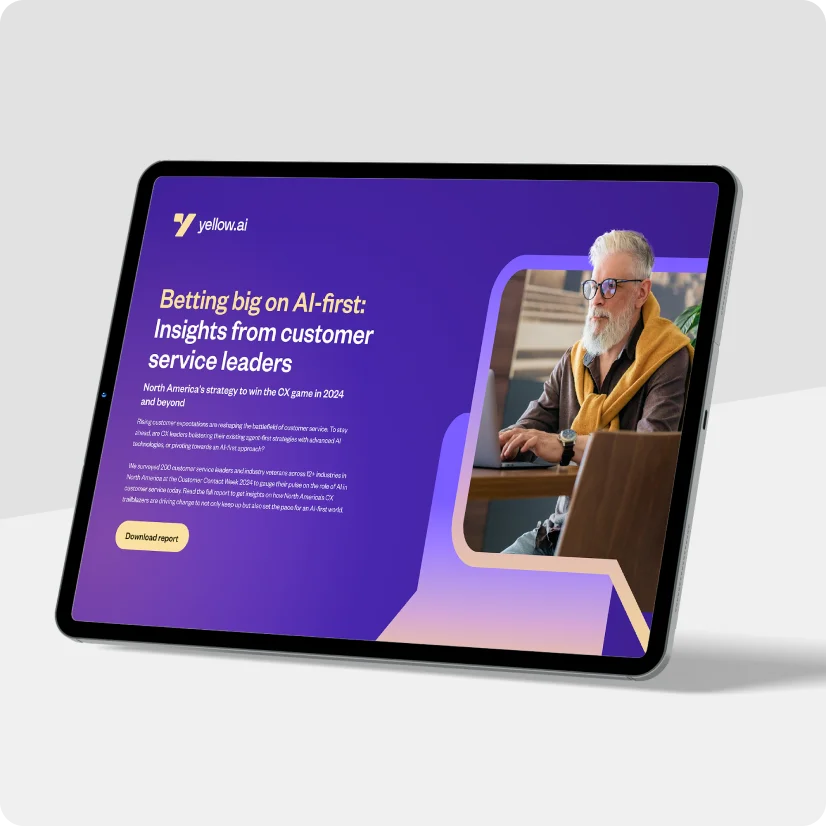All you need to know about customer engagement in 2024
Digitalization is causing seismic changes in customer expectations. In order to meet these ever-changing expectations, you need to better understand your customers and that can be accomplished by engaging with them over multiple channels across their entire life cycle. In this guide, we’ll have a deeper look into customer engagement and how it fosters a mutually beneficial relationship where businesses and customers work together to create greater value.
What is customer engagement?
Customer engagement is a broad spectrum term used to describe all interactions instigated by either a customer or company through various online or offline channels. Customers have evolving needs and in order to stay on top of all their expectations, you need to constantly engage with them and form emotional connections that go beyond monetary transactions.
An engaged customer will actively use your products or services, stay loyal to your brand and also share positive word of mouth. More importantly, user engagement can help you understand whether your messaging and services are effective. Also, as customers have become digital-first, companies need to open up more channels to reach customers where they are.
In fact, digital omni-channel customer engagement is preferred by almost 78% of the customers. It gives customers the liberty to interact with brands on their preferred channel and for businesses, it’s an opportunity to design multiple customer touchpoints.
Customer satisfaction v/s customer engagement v/s customer experience
While the three terms are used interchangeably and have an overlap, they are not synonymous. Business leaders often tend to make a mistake in understanding the difference between customer engagement, customer satisfaction and customer experience.
Apart from the definition and other technicalities, the basic difference between these business terminologies is their time of occurrence. Customer engagement usually occurs during the early stages of a customer journey, whereas, customer satisfaction occurs during the end of the customer journey. However, customer experience is the overall perception of the brand in the minds of customers so it covers the complete customer journey.
Customer engagement on the other hand is what builds experience. It is when your customers interact with you by commenting on a social media post, contacting customer support, sharing feedback or reading a knowledge base article.
| Customer Satisfaction | Customer Engagement | Customer Experience |
| It is a metric. | It can be measured and quantified. | It is subjective and experiential. |
| It is a metric to quantify how happy customer is with your product or service. | It refers to all interactions between a customer and a business. | It is how customers view and rate their journey with a brand. |
| The goal of measuring customer satisfaction is to understand the scope of improvement. | The goal of engaging with customers is to retain them and win their loyalty. | The goal of providing a good customer experience is to understand, meet and exceed customer expectations. |
| Repeat purchases, recommendation likelihood and direct customer feedback impact customer satisfaction. | Campaigns, communication channels, content and tone, all impact engagement. | Response times, convenience and accessibility impact experience. |
| Measured by NPS, CSAT and CES. | Measured by NPS, churn rate, return user frequency, time on site and other specific engagement metrics. | Measured by NPS, CSAT and CES. |
While building teams and strategies, businesses need to clearly understand the differences between the three business processes. This understanding can help in clear goal-setting and better performance management.
However, as different as customer engagement, customer satisfaction and customer experience are, the target for each of them is customers’ happiness.
Benefits of customer engagement
1. Builds long-lasting customer relationships
The key to increasing repeat customers is to build long-lasting customer relationships. Customer relationships require you to invest time into building and nurturing them consistently over time. Repeat communications with your customers throughout their journey enables you to provide real time support and also proactively offer solutions that are geared towards customer success.
2. Boosts loyalty and customer retention
The goal of an effective engagement strategy is to get an in-depth view of how your customers feel about your products or services, what experiences do they value and what gaps you can fill. It gives you relevant data and trends to upgrade the quality of your products and also makes your customers feel heard and appreciated, which in turn prevents customer churn.
When you show genuine interest in your customers’ wants and needs, it places you in their good books and encourages them to buy from you again. Moreover, it transforms you from a company that merely sells products to one that delivers exceptional experiences.
3. Uncovers up-sell opportunities
A research by Bain & Company found that engaged customers spend between 20% and 40% more than other customers. It is easier to promote and sell high-value products with additional features to your loyal brand advocates.
When you engage with customers throughout their journey, you understand their preferences and are better positioned to identify up-sell opportunities, such as recommending products that are frequently brought together or purchased by similar buyers at a later date.
4. Shortens the sales cycle
Customer engagement helps you streamline your activities and cut short the time taken to convert leads. Throughout the buying process, customers can have several questions and queries about the product.
With the help of AI- powered customer engagement tools such as chatbots, you can always stay available for your customers and promptly resolve any questions that they may have. Chatbots can offer personalized offers and discounts, make relevant recommendations based on customer data and accept payments, ultimately moving customers down the sales funnel faster.
5. Expands customer base
Acquiring new customers generally requires implementation of an advocacy program, where you identify, engage and nurture your current brand advocates that will refer new customers to you. When it comes to nurturing customers, many brands try to give incentives and freebies but that may no longer be enough, you want to ensure you’re also providing value. The more you get in front of customers, the better.
6. Increases sales and revenue
Research shows that active customer engagement can not only increase brand awareness but also increase your revenue per customer. Engagement can create long-lasting impressions on your customers, which means they are thinking of you more often. This recognition trickles down into revenue and sales as customers continue coming to you with their business instead of going to a competitor.
Customer engagement platforms and their importance
A customer engagement platform is a software that helps businesses centralize, automate, track and analyze customer interactions happening on all the customer touchpoints through all stages of the customer journey. Using a platform, businesses can effectively improve their customer engagement and as a result, deliver an exceptional customer experience.
The customer engagement platform plays a vital role in improving operational efficiency and reducing costs. This is because it helps businesses understand their shortcomings in customer engagement through analysis and provides deep insights. The information can further be used to make informed decisions.
In addition, a customer engagement platform can automate mundane tasks and reduce the workload of employees. This can help the employees take steps to improve their customer engagement and strategize the channels, campaigns and timings of the engagement.
A customer engagement platform is important for businesses as it helps them in the following ways:
1. Fastrack business processes
It helps in automating the entire engagement workflow efficiently by considering the crucial functions such as collaboration and information sharing. With automated engagement, the complete sales cycle runs smoothly improving the overall performance and speed of the business.
2. Enable omnichannel communication
When businesses reach out to customers through multiple channels, the brand recall value increases significantly. Apart from that, omnichannel communication increases the reach of a business by enabling engagement through various channels such as emails, social media and live chat.
3. Deliver personalized experiences
A customer engagement platform helps businesses segregate customer data and create separate segments for each demographic. This helps businesses in delivering personalized experiences based on their choices, preferences and buying power.
4. Measure outcomes
Metrics and insights are of utmost importance in customer engagement. Businesses need to understand the likes and dislikes of their customers and see what is working for them and what is not. A customer engagement platform can provide detailed insights for leaders to make informed decisions.
In this digital era, businesses must use an arsenal of customer engagement tools if they want their employees to have a work-life balance. A customer engagement platform can help businesses make customer-focused and data-driven decisions in order to constantly improve the customer experience metrics.
Examples of best customer engagement messages
Customer experience and customer engagement are two sides of the same coin. Both are important for a company’s overall success but confusion can arise as these terms are often used interchangeably.
1. Welcome messages
Break the ice by sending a welcome message to customers either informing them about what you have to offer or telling them that you’re here to help if they need.
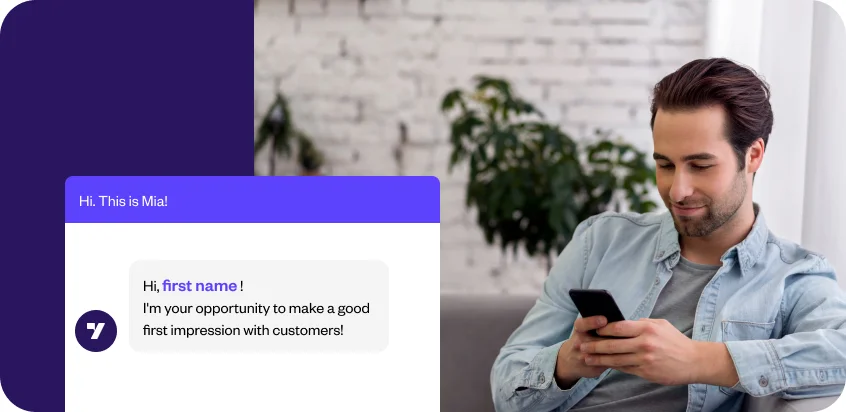
2. Activation messages
Many times customers may sign up for a webinar or a demo but aren’t sure about the next steps. You need to be proactive in engaging with them and clearly outline what is the next step they need to take.
3. Feature messages
Launch new products and services with dynamic feature announcements. Tell customers how this feature might solve their problems and convince them to give it a try by pushing personalized discounts.
4. Lead gen messages
Find people who are interested in your business with an automated question and answer flow. With lead gen messages you can engage customers in meaningful conversation to gather insightful data.
5. Feedback messages
Gathering feedback via emails or social media posts isn’t easy. You need to inspire people to give feedback and share reviews online with the help of interactive feedback messages. The key is to be specific and let customers know how you’re planning to use this feedback.
Customer engagement examples
We have listed some of the world-class customer engagement examples exhibited by some leading brands. These examples can give you an idea about how customer engagement can take your business to a global level. In addition, you can also understand the type of campaigns loved by customers and how to implement them creatively.
1. Coca-Cola
In 2014, Coca-Cola launched a campaign that took the world by storm. Within the #ShareACoke campaign, Coca-Cola replaced the company logo with 250 most common names in the U.S. This was just the beginning, moving forward it customized bottles with thousands of names and even allowed customers to order a bottle of Coca-Cola with their name on it.
This campaign was hyper-personalized and highly engaging for customers. People bought the bottles with the names of their friends and families and enjoyed the drink along with them. The campaign was highly successful and had a great impact on the revenue of the organization.
2. Starbucks
Starbucks, being a leader in the industry, wanted to do something for their customers to increase their loyalty and make them feel special. For this, the brand created a community called Starbucks Reserve Roastery and a tasting room in which customers could talk to coffee specialists and try a variety of rare coffees.
Customers could not just engage with a brand on a superficial level but also get an experience like never before. They were considered a part of the Starbucks community and could get an inside look at the company’s product development process. The campaign was quite exciting for the customers and helped the brand build a stronger relationship.
3. Slack
Slack is an essential part of the work lives of its customers. The platform is a messaging program for workplaces that helps businesses engage with their employees virtually. However, the platform is only for professional usage, it engages with its customers with hyper-personalization.
It uses each and every space to interact with the users and connect with them personally. For example, when Slack had an app update, it used the description space to send a positive note to the users.
The message was actually for every hard-working employee and must have made the users smile.
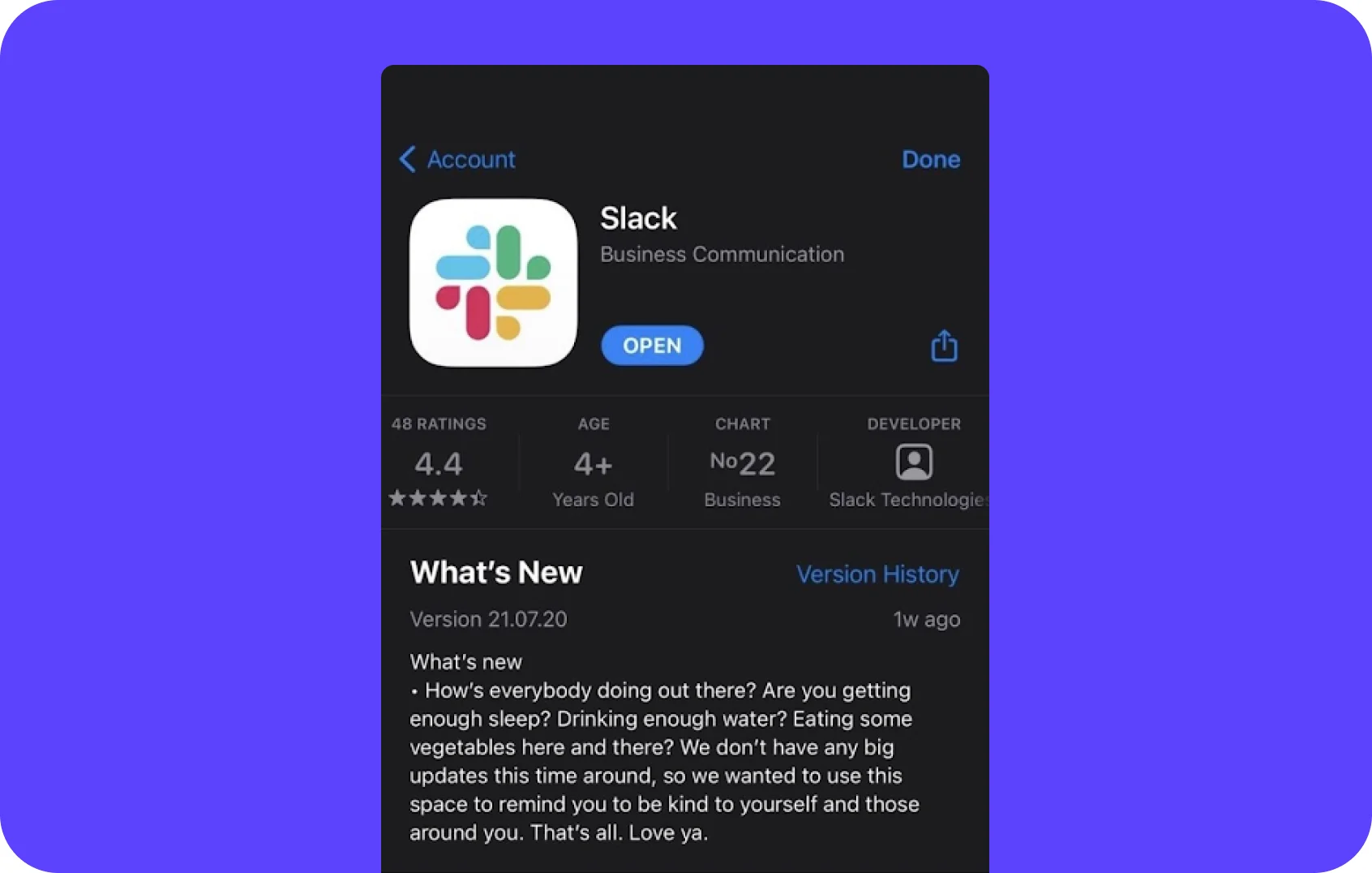
Customer engagement for marketing
Marketing is all about sending the right message at the right time through the right channel. Easier said than done, marketers struggle to manage so many different communication channels and often end up focusing on just two-three channels like social media and emails.
Customer engagement marketing focuses on building a strategy to interact with customers based on their requirements and place in the sales funnel. With good customer engagement, marketers can retain customers and convert new ones.
Customer engagement for sales
Customer engagement is vital throughout the marketing and sales funnel. While customers get attracted to a brand through its top-of-the-funnel interactions and communication, they move down the funnel by building a relationship with the brand and trusting them for their products and services.
A strong and cross-channel customer engagement strategy can help a business build relationships and convert more customers. The traditional sales representatives are also focusing on understanding the prospects through engagement and only then pitch them their products and services.
Customer engagement for service
After customer satisfaction, businesses track KPIs such as first contact resolution (FCR), customer effort score and case deflection. The majority of these are based on a customer engagement strategy at the bottom of the funnel.
Businesses are continuously rethinking and refining their customer engagement so as to improve customer service and offer better customer satisfaction. The difference between a successful and a growing business lies in the way they engage with customers right from the awareness stage to the retention and support stage.
How to drive better customer engagement?
In order to drive better customer engagement, you need to implement some tactics that can make your business stand out from the competition. Using the right tools and following the right strategy can definitely help you do that. Following are a few points to consider while building a customer engagement strategy or moving towards better customer engagement.
1. Goal setting
Before building a customer engagement strategy, it is essential to set a clear and measurable goal for engagement that should be able to answer questions like- why the organization need customer engagement, what are the shortcomings in the current process, and what are the short and long term revenue targets, and a lot more.
Once the team is able to set a goal and distinctly understands the reasons behind all the customer engagement efforts, they will be able to move towards the goal smoothly and with a goal-oriented approach.
2. Implementing a cross-functional team collaboration
Customer engagement is not a business operation or a task that can be completed by a department or a person. It is a collaborative effort of an entire organization. Teams need to work together and ensure that the engagement is consistent and follows the guidelines.
For example, if a salesperson is interacting with a customer about the features and functionality of the product, it is the responsibility of the marketing team to provide the collaterals that can help the customer understand better about the product. Working with cross-functional teams can help a business expand its customer engagement quickly and effectively, with minimum or no hurdles on the way.
3. Identifying the right channels of communication
Based on the nature and customer base of your organization, you need to select a set of the best channels for customer engagement. A business cannot just begin to engage with customers on all channels without having a plan or strategy.
There are more than 35 voice and text channels available for engaging with customers, but a business needs to target the right channels where they can find the maximum of their target audience. A business that is able to identify the right channels and the right time to meet and engage with its customers has a successful strategy and can drive better customer engagement.
4. Gathering feedback from internal and external stakeholders
Once a customer engagement campaign is live, focus on the goals set up in the beginning. Track the metrics and make required changes. Rely on the numbers, but don’t forget about human feedback.
Ask the internal and external stakeholders to thoroughly examine the campaign and provide necessary feedback. Include employees and understand their point of view about customer engagement. Implement all the necessary changes and keep the feedback in store for future reference.
5. Iterating the customer engagement strategy
In order to drive better customer engagement, businesses should not wait for an entire year before making any changes or iterating the customer engagement strategy. Engaging with customers is continuous and so is implementing the strategy.
Businesses can stick to a consistent timeline to track the progress of their customer engagement strategy and understand how far are the goals. Tracking can provide insights to the business that can further be used to make informed decisions.
What are the metrics to measure customer engagement?
Customer engagement is quantifiable and can be measured using the following metrics that give a bird’s eye view of how users interact with your brand. Businesses can use these metrics to address any problem areas, improve the experience of their customers, analyze trends in loyalty, and supercharge revenue through referrals.
1. Net promoter score (NPS)
Net promoter score (NPS) is a customer loyalty measurement that involves sending a single survey question asking respondents to rate the likelihood that they would recommend your company, product, or a service to a friend or colleague. It is best for understanding if a customer is in for the long term and is ready to become a brand ambassador.
To calculate NPS, subtract the percentage of people who are not eager to promote your products or detractors from the percentage of promoters. For example, if 10% of respondents are detractors, 20% are passive and 70% are promoters, your NPS score would be 70-10 = 60. (Passives are not to be included in the calculation.)
According to the general NPS benchmark, a positive score or above 0 is “good”, +50 is “excellent”, and +70 is “world-class”. NPS = % Promoters – % Detractors
2. Customer satisfaction score (CSAT)
Customer satisfaction score (CSAT) tracks how gratified your customers are with a product or service. It can be measured by asking one or a set of questions to understand the overall happiness or disappointment of customers.
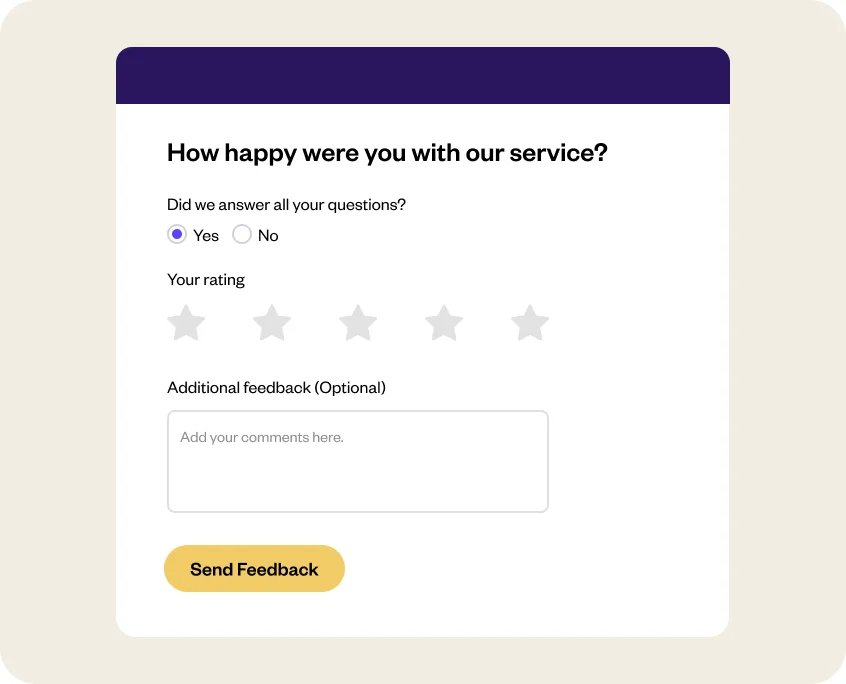
For instance, after interacting with a customer and successfully solving their problems, you can ask the following: “How would you rate your overall satisfaction with our service?“. They can reply by choosing one of the numbered options.
- Very unsatisfied
- Unsatisfied
- Neutral
- Satisfied
- Very satisfied
You can also request customers to provide detailed feedback if they want.
A composite Customer Satisfaction Score (an average rate) can be achieved by taking the number of satisfied customers (the highest values which are 4 and 5) and dividing them by the number of survey responses. Results are typically shown in percentage, with 100% representing complete satisfaction.
(Number of satisfied customers (4 and 5) ÷ Number of survey responses) x 100 = % of satisfied customers
3. Customer lifetime value (CLTV)
CLTV is one of the most important engagement metrics as it helps you measure the amount of revenue a business can expect from a client over the whole period of their relationship.That means, the longer a client continues to buy from your company, the higher will be your CLTV.
To compute CLTV, all you need to find is lifetime value – multiply an average value of the sale by the number of transactions a user did and a retention time period.
LTV = Average Purchase Value × Number of Transactions × Retention Time Period After that, you can calculate CLTV by multiplying LTV by profit margin. CLTV = LTV × Profit Margin
A good customer lifetime value would be at least three times greater than your customer acquisition cost (CAC). In other words, if you’re spending $100 on marketing to acquire a new customer, then your CLTV should atleast be $300.
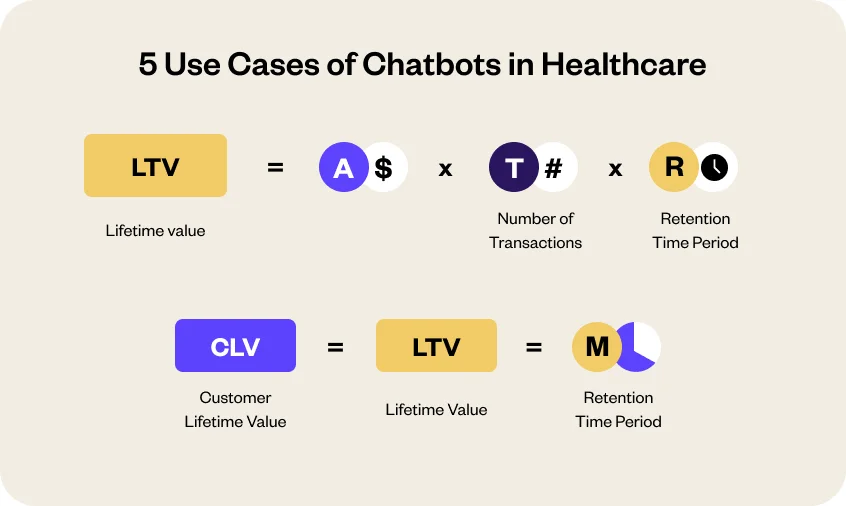
4. User activity (DAU/MAU)
This customer engagement metric is measured by comparing the daily active users(DAU) with monthly active users (MAU). It is important to ascertain how many unique clients are using your product or service during a particular time interval.
To calculate DAU/MAU ratio, you need to first determine what ‘active’ means for your business. It could be anything from a purchase (for ecommerce or mobile apps) or product login/usage (for SaaS companies or mobile apps).
After you’ve defined active for your product, you can then calculate the number of unique active users in a 24-hr period and also the number of unique active users over the past 30 days. With these two metrics, you can divide DAU by MAU to get the ratio percentage. A ratio of 20% is considered to be good, and if your DAU/MAU ratio reaches 50%, then it’s excellent.
5. Repeat purchase rate
To put simply, the repeat purchase rate measures the proportion of customers that have bought from your brand more than once. The calculation of repeat purchase rate involves focusing on specific time frames.
For instance, what proportion of customers who made a purchase this week, month or quarter had made a previous purchase within the same timeframe. However, it doesn’t mean every business should measure customer engagement based on visit frequency the same way.
All customers are different and each brand has its own unique goals, so you can set a time frame that’s specific to your business. To compute the repeat purchase rate, simply divide the number of return customers by the total number of customers, and multiply by 100 to convert to a percentage.
6. Churn rate
The churn rate user engagement metric, measures the percentage of customers who cut ties with your business during a specific time frame. This metric is specifically significant for those companies whose customers repeatedly pay, like SaaS or other subscription-based models. A high churn rate indicates that a business is losing significant customers, certainly more than it is bringing in.
Churn rate = The number of clients [beginning of a time period] – The number of clients [the end of a time period] ÷ The number of clients [beginning of a time period] * 100%
5 – 7% annual churn is a great benchmark to aim for – if you’re an established company, primarily targeting the enterprise. If you’re earlier-stage, or targeting SMBs, expect churn to be closer to 5% per month.
8 proven strategies for effective customer engagement
1. Map your customer journey
A customer journey map is a visual representation of the customer journey across all touchpoints including social media, email, livechat or other channels. Mapping the customer journey ensures that you are not missing out on the chance to interact with your customer at any stage. This process also helps businesses identify common customer pain points, improving which can enable companies to deliver more optimized and personalized customer experiences.
2. Personalize interactions
Hyper-personalization is the future of customer engagement. Over three-quarters of consumers (76 percent) said that receiving personalized communications was a key factor in prompting their consideration of a brand, and 78 percent said such interactions made them more likely to repurchase.
Personalization is especially effective at driving repeat engagement and loyalty over time. Consistent and continuous engagement creates more data from which brands can design ever-more relevant experiences—creating a flywheel effect that generates strong, long-term customer lifetime value and loyalty
3. Practice Active Listening
Active learning is when you learn from past interactions with customers to improve further communications. Knowing your customers is the key to retaining them. Customers tend to be vocal about what they want, the key is to listen to what they are saying about your business, how do they compare you with your competitors and what is their feedback to your products and services. Gathering all this knowledge enables you to improve your customer experience and solve customer problems better.
However, since the advent of Covid-19 and the rapid acceleration of digitalization, businesses worldwide are experiencing record-high engagement. Gathering such volumes of data can be extremely difficult without a layer of automation. With CX automation softwares such as chatbots, you can not only automate responses but also gather customer data at scale to derive knowledgeable insights.
4. Create a knowledge base
While finalizing on a product or a service, customers are likely to seek out answers to common questions or challenges. Having a knowledge base allows customers to get the information they’re looking for without having to call customer support.
However, knowledge base pages often allow one-sided customer engagement. With chatbots and live chat, customers can engage in two-sided conversations to get instant response to their queries in real-time. It also adds a personal touch to customer engagement and is much more effective than reading a blog on your website. 65% of customers expect a resolution to their issue at first contact. Customers can simply ask questions from a chatbot and get answers in real-time.
5. Deliver omnichannel customer engagement
90 percent of customers expect their experience with the brand to be consistent across all platforms. They also demand a seamless, consistent, and personal experience from all channels when they interact with your brand.
For instance, if they interact with your brand on Instagram and then switch to WhatsApp they would prefer to pick up right from where they left. Brands need to adopt an omnichannel customer engagement strategy that allows them to understand customer behavior and deliver relevant messages wherever (and whenever) the customer prefers.
6. Create customer loyalty programs
Acquiring a new customer can cost five times more than retaining an existing customer. This is why it’s important to focus on customer retention and reward customers for being loyal to your brand. Creating a customer loyalty program entails rewarding loyal customers with special offers, discounts and more, basically giving them exclusive deals and special treatment. This can help you retain more customers, acquire new ones and drive profits.
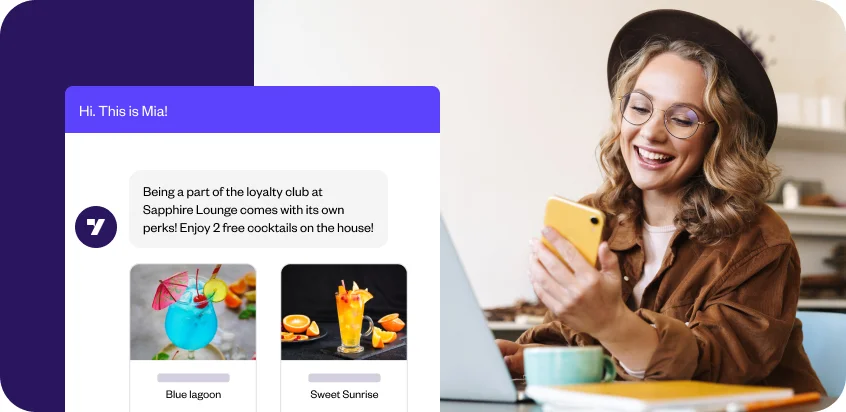
Rewards programmes also double as a form of market research. They allow you to experiment with various incentives, identify the rewards that appeal to specific types of customers and pinpoint the rewards that don’t receive as much engagement. Rewards programmes are a USP in themselves and they can help you build detailed customer profiles and understand nuances within your own target market that might otherwise go unnoticed.
7. Provide live customer engagement with cobrowsing
Live customer engagement via co-browsing is an emerging trend that enables you to assist customers throughout their purchase journey. Whether you employ chatbots or live-chat softwares, Co-browsing with either chatbots or live chat can compensate for the need of a helpful store associate like in a traditional retail setting.
The effective use of this tool can allow agents to collaborate with customers and guide them in accomplishing complex tasks. It will also result in quick resolution of issues, reduction in the number of touchpoints and faster conversions.
8. Use the right tools to engage your audience
Instead of having a long-term engagement strategy, many companies focus on engaging with users at the beginning of their journey via welcome emails, onboarding messages, and customer success outreach.
It is important to note that customer engagement spans the length and breadth of the user journey. It doesn’t end at first-contact or sales. It also nurtures customers even after they have completed a purchase to make a difference between customer retention and customer churn. Here are a few tools that you can use to keep the conversation going with relevant, helpful information:
- Intelligent chatbots
- Live-chat software
- In-app notifications
- Email or text automation
- Video calls
- Voice AI
Boost customer engagement with conversational AI
Conversational AI enable you to connect with your customers anytime, anywhere, across channels and in multiple languages. It uses advanced NLU, AI and ML to synthesize speech, understand user intent and sentiment to engage with customers in a way that mirrors human conversations. When you automate conversations with cutting-edge AI-powered tools, you add contextual intelligence to every part of the agent/customer interaction lifecycle.
























